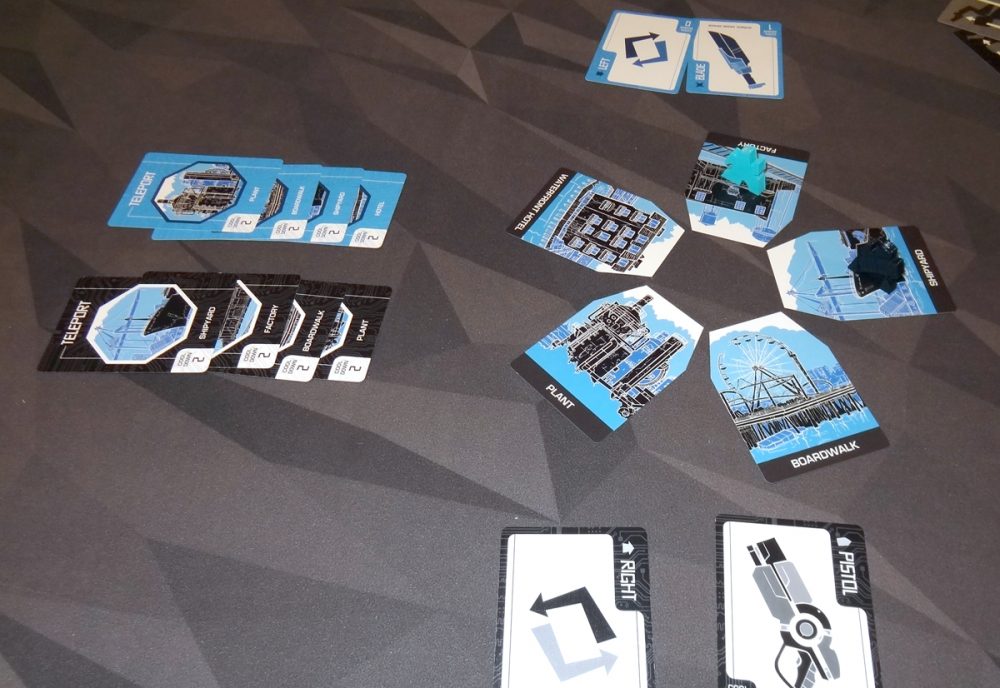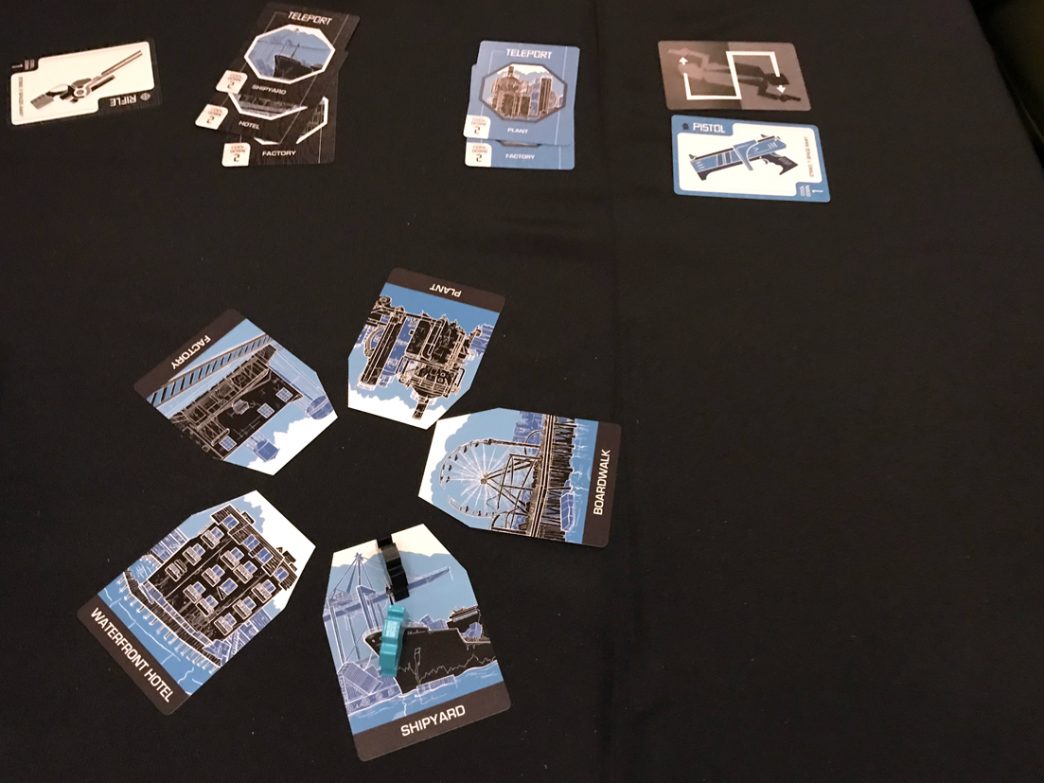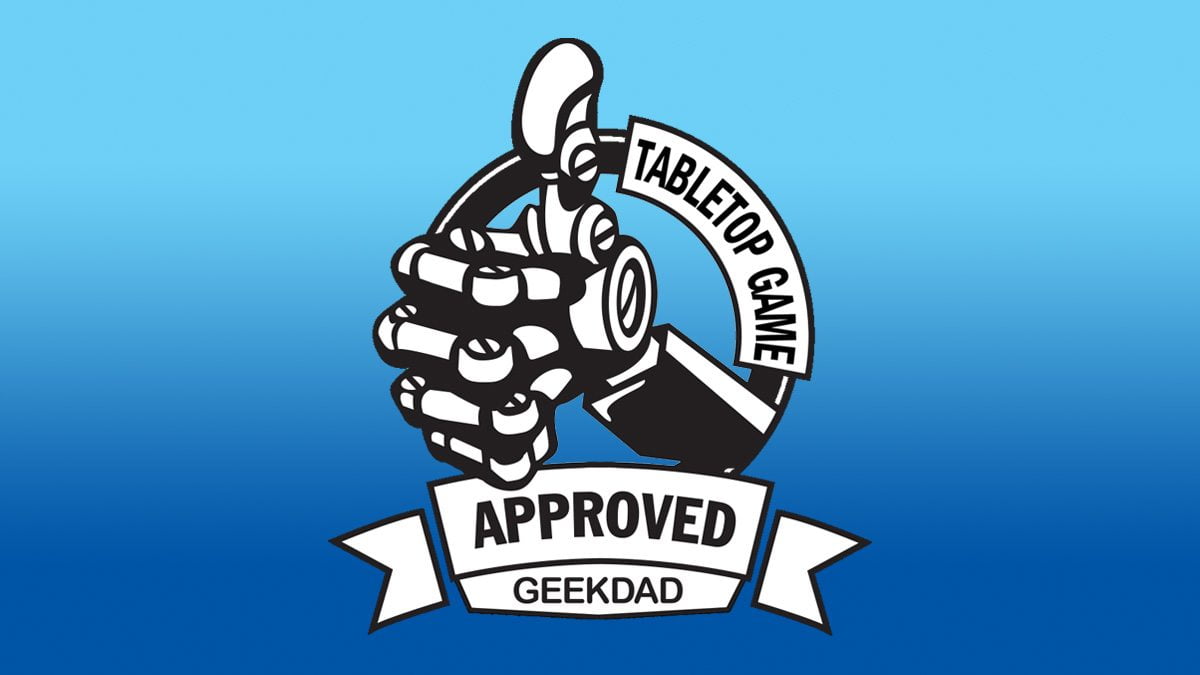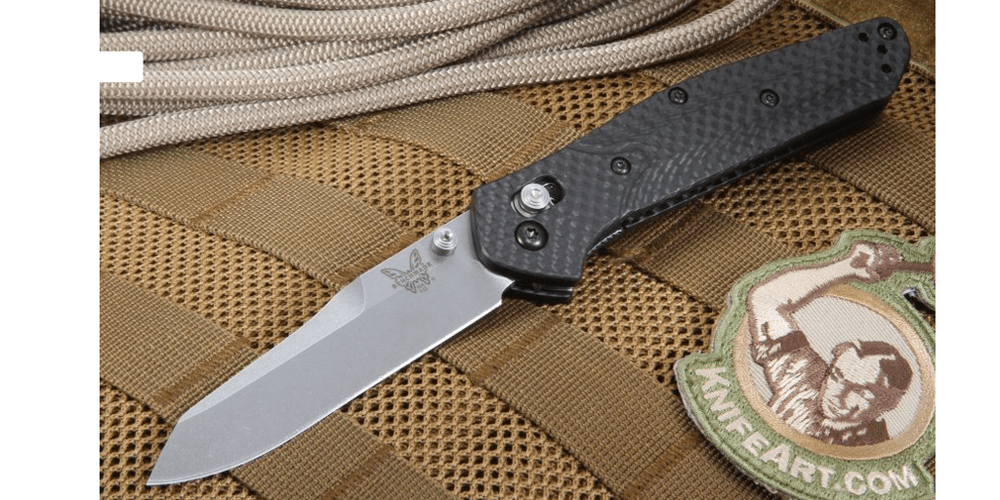Two teleporting time-travelers arrive in the city, but only one will walk away. Who will prevail in this battle of wits?
What Is Slip Strike?
Slip Strike is a card game for 2 or 4 players, ages 10 and up, and takes about 10 to 15 minutes to play. (There will be rules for playing with 4 players by combining 2 copies of the game, but I only had one copy to try.) It’s designed by David Gerrard and is currently seeking funding on Kickstarter, with a pledge level of $14 plus shipping for a copy of the game, $27 plus shipping for two copies (one orange, one blue), and $44 plus shipping for a set that includes two copies and 3 scenario packs. The rules themselves are pretty easy to learn, so I think the age rating is about right; thematically, the game involves two players trying to attack each other with weapons, so parents should be aware of that.
New to Kickstarter? Check out our crowdfunding primer.

Slip Strike Components
Note: My review is based on a prototype copy, so it is subject to change and may not reflect final component quality. The locations are cards in the prototype but will be cardboard tiles in the finished game. Another change is that the agent meeples in the final game will have snazzy colored neckties painted on them. This prototype included 8 asset cards, but that number may change based on the success of the Kickstarter campaign.
The game components are fairly simple:
- 5 Location tiles
- 20 Basic cards (10 Blue, 10 Black)
- 2 Agent meeples
- 2 Critical Cooldown cards
- 8 Asset cards

The art and design on the cards is by Justin Hillgrove and Zachary Vail, and is a bit of a departure from the usual style seen from Junk Spirit Games, which are often set in the fantasy world of Tessandor. This one goes for more of a retro-futuristic vibe, and I really like the understated black-and-blue color palette. I also like the fact that the two decks, although they have identical effects, have custom illustrations for the weapons. The orange set will have the same rules, but a different set of asset cards, and it will also have unique artwork.
The basic cards are all pretty easy to interpret—there’s not that much information needed on the cards. The asset cards are a little more complex, but even those don’t require too much reference to the rules. Overall, things are pretty intuitive.
How to Play Slip Strike
You can download a copy of the rulebook here.
The Goal
The goal of the game is to eliminate the other player.

Setup
Setup is a cinch: lay out the five location tiles in a ring (in random order), and give each player a meeple and the 10 matching basic cards: 5 teleport cards (1 per location), 3 weapons, and 2 movement (left and right). Each player secretly chooses one teleport card, which will represent their starting location. Players reveal cards simultaneously, place meeples in their starting locations, and then return the teleport cards to their hands.

Gameplay
Each round, players will secretly program their next two moves, choosing two cards from their hands and placing them face-down.
Then, players simultaneously reveal their first programmed action: movement cards (move left/right or teleport) are resolved first, and then strike actions (weapons). If both players play strike actions, they are resolved simultaneously (see below). Then, both players reveal their second programmed action and resolve them.

The three weapons attack at different ranges: the blade attacks your current location, the pistol attacks the two adjacent locations, and the rifle attacks the two farther locations. If you hit the space where your opponent is, then they must “slip” to avoid the strike, reversing time just enough to teleport away. The opponent must play a teleport card from their hand to move to a location that your weapon cannot hit, and that teleport card is permanently removed from their hand.
Each card has a cooldown time, indicating how many rounds you’ll need to set that card aside before you put it back into your hand.
After resolving both programmed moves, begin a new round, with both players programing two moves again.

Game End
If you strike your opponent and they don’t have a teleport card in hand that allows them to slip, then you win the game.

Asset Cards
Once you know the basic rules, you can add in the asset cards. Each player gets one asset card at random to add to their hand at setup. These give powerful abilities, like a shield that protects you from strikes for one action, advantage that negates the other player’s weapon when you both use the same weapon simultaneously, and dash cards that let you move two spaces instead of one.
Some of the assets are discarded when played, and some have a “critical cooldown”: that means that it’s set aside on the Critical Cooldown card until the next time you slip from a strike—then it has cooldown 2.
Why You Should Play Slip Strike
I first tried a prototype of Slip Strike at Gen Con this year, and it was one of my highlights of the show: it’s a slick, fast-paced game that looks sharp and is easy to learn, and it hits a lot of the right notes for me. I like simultaneous action games, where you’re trying to figure out what your opponent is going to do, and this one adds that small bit of programming since you have to choose two actions per round instead of just one. Since everyone starts with the same basic abilities (aside from the asset cards), it’s also a game with perfect information: you know exactly what your opponent is capable of, and they know the same about you. It’s a great battle of wits.
Since movement always resolves before the strikes, you’re basically trying to target the space where your opponent will be: will they stay still and try to hit you, or will they move to another location? If they move, which way will they go? With your three weapons, you can hit any of the five spaces on the board—but the weapons have a 1-round cooldown. That means that, after your opponent takes a shot at you, you know they don’t have access to that weapon for a round, which creates a couple of spaces that are “safe” for you… at least, based on your opponent’s current position.
Using teleport cards to move around the map can help you take your rival by surprise, if they’re only considering left and right as possibilities. However, the teleport cards also have a 2-round cooldown, so using them carelessly can leave you stranded. I’ve seen games end not because somebody had run out of teleport cards, but because the teleport card they needed was still cooling down at the time. Knowing which teleport cards your opponent has access to is also crucial, because it may let you strike them with a card that they can’t escape.

Programming two moves at a time can be difficult, because your second action will depend a lot on what happens during the first action. Do you move, and then try to shoot at the space where you think your opponent will be? Or do you strike where your opponent is now, hoping they don’t move—but if they don’t move, then will they hit you? Thematically, it gives it the feel of making split-second decisions that are unspooling in slow-mo: you’ve already decided your next two steps, and it’s too late to change your mind when you realize your opponent did something unexpected.
Even your choice of teleport card to slip away when you get hit has important consequences, because of the two-move programming. If you get hit on the first move, your second move will take place from your new location, so it’s important not to throw down just any valid card to get away—again, you can consider what your opponent’s second step is, and see if you can use your slip to get into a more advantageous position.
Slip Strike manages to do a lot with a small set of cards—even without the additional asset cards, it can become a very intense cat-and-mouse game, and I love the way that it helps you imagine yourself in this world of spies and assassins. With the introduction of the asset cards, each person has a particular edge on the other. I like to play without revealing the asset you drew, so that your opponent doesn’t know what you have until you make it public. If you like 2-player games and you’re looking for a good battle of the wits, I highly recommend Slip Strike!
For more information or to make a pledge, visit the Slip Strike Kickstarter page!

Click here to see all our tabletop game reviews.
![]() To subscribe to GeekDad’s tabletop gaming coverage, please copy this link and add it to your RSS reader.
To subscribe to GeekDad’s tabletop gaming coverage, please copy this link and add it to your RSS reader.
Disclosure: GeekDad received a copy of this game for review purposes.







